Assisted Living
How to Stay Safe During a Fire When Living with a Disability
Fire safety is essential for everyone, but for people living with disabilities, it can present unique challenges. Mobility issues, sensory impairments, or cognitive conditions may make it harder to detect a fire, react quickly, or evacuate safely.
Fortunately, with the proper planning and equipment, it’s possible to stay safe and maintain independence. In this blog, we’ll explore practical steps and valuable resources to help you prepare, stay calm, and act effectively during a fire, all while utilising accessible aids and products designed to support safety at home.
 Planning Ahead
Planning Ahead
The best way to stay safe during a fire is to prepare in advance. The London Fire Brigade and Fire England recommend creating a Personal Emergency Evacuation Plan (PEEP). This is a customised plan that considers your mobility, communication needs, and home layout.
Here's what you can include…
- Identify escape routes: Keep them clear of obstacles and ensure they are suitable for mobility aids or wheelchairs.
- Install smoke alarms: For those with hearing impairments, use alarms with strobe lights or vibrating pads that can wake you during the night (as recommended by Tyne & Wear Fire and Rescue).
- Practice your plan regularly: Rehearsing your escape builds confidence and ensures everyone in the household knows what to do.
- Inform your local fire service: Many UK fire services offer free home safety visits and can provide tailored recommendations based on your needs.
- The GOV.UK fire safety guidance also emphasises the importance of keeping a phone nearby your bed and ensuring your address and contact details are easily accessible in an emergency.
Staying Safe
If a fire does occur, the most important thing is to stay calm and act quickly.
Get out, stay out, call 999 (if you can safely do so)
If you can't evacuate, move to a safe room (preferably near a window) and block smoke by placing towels or a blanket down around the door.
Call for help immediately and let the operator know you have a disability so the emergency responder can plan their approach.
For individuals with mobility impairments, keep mobility aids such as wheelchairs, walking frames, or transfer boards readily available at all times.
For those with visual impairments, practice navigating escape routes by touch, as advised by GOV.UK’s fire safety for people with sight difficulties.
Remember – Never try to tackle fire yourself. Getting yourself to safety is always the priority.
Community and Support
You don’t have to manage fire safety on your own. Most fire and rescue services across the UK offer free home fire Safety visits for people with disabilities, where they can access your home and install specialist alarms or devices. Organisations such as the London Fire Brigade, Tyne & Wear Fire & Rescue, and Fire England all encourage residents to register with their local fire service if they have additional needs, ensuring emergency responders know how to assist you in a fire.
Additionally, local councils and disability charities often have resources and checklists to help you prepare. Having a trusted neighbour, carer, or friend who knows your escape plan can also be invaluable.
To Conclude...
Fire safety doesn't have to compromise independence. By taking proactive steps (planning ahead, adapting your home and using assistive products), you can create a safer, more accessible living environment.
With preparation, support and awareness, everyone can feel secure and confident in their ability to stay safe during a fire.
Links:
The London Fire Brigade offers a free home fire safety visit. Visits can be arranged at any time (24/7), and specialist alarms can also be fitted – for example, strobe light and vibrating pad alarms for individuals who are deaf or hard of hearing.
https://www.london-fire.gov.uk/safety/the-home/home-fire-safety-visits/
Or you can use the Home Fire Safety Checker, provided by the London Fire Brigade. It only takes a few minutes and will provide you with tailored advice on the safety of your home.
https://www.london-fire.gov.uk/safety/the-home/home-fire-safety/home-fire-safety-checker-hfsc/
Information about fire safety for Carers https://fireengland.uk/fire-safety/fire-safety-carers
Promoting Independent Living Through Smart Home Design
According to the Royal Society for the Prevention of Accidents (RoSPA), the home is the most common location for an accident. Falls are noted to be the most common of accidents, which can result in serious injury for anyone of any age, though the risk of falling increases as we get older. For seniors who wish to live independently in their own home, safety is essential for both minimising accidents and elevating quality of life. In the kitchen, innovative design solutions can minimise burns, slips, and falls. From the power of technology and lighting solutions to burn prevention, there is no shortage of options when aiming to elevate kitchen safety.
The Role of Efficient Lighting
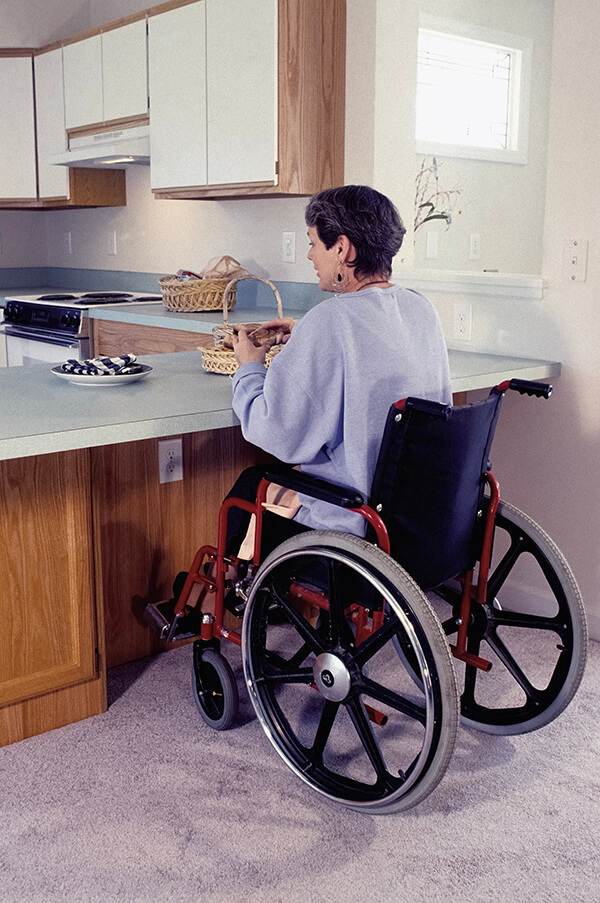 Modern kitchens have evolved to put safety at the forefront of design, with Shyamala Prabhu, Principal Architect at Aakruti Architects and Designers explaining it best. “The modern kitchen has evolved in a way to take care of all age groups. For example, appliances with a soft touch and soft closing are very safe even for senior citizens to use.” Prabhu points out the value of technology within the kitchen, noting that appliances that respond to voice can be particularly beneficial to older individuals who wish to maintain independence within their kitchen. Technology enables seniors to set a timer, operate smaller appliances (like a coffee maker), and even turn on lights with their voice or the touch of a button, making the modern kitchen immensely accessible for those with limited reach or those who experience a disability.
Modern kitchens have evolved to put safety at the forefront of design, with Shyamala Prabhu, Principal Architect at Aakruti Architects and Designers explaining it best. “The modern kitchen has evolved in a way to take care of all age groups. For example, appliances with a soft touch and soft closing are very safe even for senior citizens to use.” Prabhu points out the value of technology within the kitchen, noting that appliances that respond to voice can be particularly beneficial to older individuals who wish to maintain independence within their kitchen. Technology enables seniors to set a timer, operate smaller appliances (like a coffee maker), and even turn on lights with their voice or the touch of a button, making the modern kitchen immensely accessible for those with limited reach or those who experience a disability.
Additional design choices can further enhance the accessibility and safety of a kitchen. Lighting, for example, can go a long way when creating a kitchen that keeps safety at the forefront of the design. While it may sound relatively simple, it can enable individuals to see hazards like clutter and dropped items better. Efficient lighting can also allow an individual with poor eyesight to read a recipe better, which can further prevent any mishaps. In addition, specialised lighting solutions can illuminate those ‘always dark’ areas or corners of the room. Recessed or track lighting is often used when installing accent lighting. In the kitchen, accent lighting can make a significant difference when better illuminating the countertops throughout the day and night. Drawer lighting can also make a difference, especially when it comes to cluttered drawers or containing sharp utensils.
Proper lighting can also supplement smart organisational strategies, making favourite products more accessible and visible. For example, products geared towards safety and independence in the kitchen — like Anti-Slip Cutlery Grips or Antimicrobial CupCaps can easily become lost or misplaced in the kitchen. A designated drawer with lighting or even a small basket on the counter, however, can be illuminated for easy access while providing the items with a designated place. The same can be said when keeping practical items like Anti-Slip Cup Holders and Anti-Slip Coasters within reach, making a nighttime tea much safer and accessible.
From Burn Prevention to Fire Safety
Burns are a common injury that can generally be avoided when considering kitchen safety. Innovative kitchen solutions, such as Extreme Super Grip Adhesive Mats, are ideal when carrying a tray of hot tea or soup. However, diving deeper into kitchen design can further prevent injury. For example, one Houzz article points out that keeping your microwave at counter height is best for your back, as it eliminates the need to bend or reach over your shoulders. This can also prevent injury when heating food, enabling you to grip plates and cups without spilling.
Non-slip floor mats can further add to burn prevention within the kitchen, especially when considering how often hot items, liquids, and food are shuffled about from countertop to stove. When choosing the right non-slip floor mat, it’s imperative to factor in comfort and safety, especially if you enjoy spending plenty of time in the kitchen. Slip-resistant anti-fatigue mats are a consideration when enhancing kitchen safety while supporting the back and feet. When it comes to the stove, installing high-heat limiting burner covers and an in-hood extinguisher that can contain a stove top fire are both significant considerations in addition to a kitchen fire extinguisher.
Encouraging Healthy Activities — the Kitchen Garden
Integrating plants within the home can promote independent living, especially when outdoor gardening presents challenges (an uneven walkway, pain associated with kneeling, etc.). On the other hand, caring for indoor plants presents an excellent opportunity to stay active and engaged in a hobby. That said, even the presence of plants within the home brings to light an array of benefits. For example, plants in the home or office are scientifically proven to make you feel more comfortable, soothed, and natural, according to one study published in the Journal of Physiological Anthropology. Healthline goes on to identify several additional advantages of plants within the home, noting that they may boost productivity, provide therapeutic benefits, and may even help you recover from illness faster.
To accommodate seniors who experience health conditions that can make movement difficult (like arthritis), mindfully designing a safe and green kitchen is essential. One way to do this is by elevating individual plants or an indoor garden to prevent the need for bending down and minimise the risks of tripping and falling, while incorporating a nearby plant-care station (with arthritis-friendly shears, for example) can encourage regular and pain-free gardening. A straightforward solution is to keep a small herb garden on the counter, using a non-slip mat to secure the plants while keeping the greenery central to the kitchen sink for easy watering. The same idea can be applied should you choose to designate a drawer to gardening supplies. Tenura grip strips and rolls can also be helpful to store and organise supplies while guaranteeing that everything stays put.
Moving extra plants to the living room is another solution, especially if your kitchen doesn’t allow for the safe integration of plants. In smaller spaces, utilising vertical space is key in keeping plants off the ground in a way that minimises clutter. This is particularly important when keeping in mind the fact that according to the RoSPA, more accidents occur in the lounge or living room than anywhere else in the home. With that in mind, a macrame plant hanger is an excellent solution and can even be made right from home with the help of a kit. A shelving structure is another great way to confine the plants to a specific indoor gardening area while minimising the chances of tripping over anything.
Safety is a must when trying to maintain independence at home as we age. The kitchen is just one area of the home that can result in cuts, burns, and other injuries, highlighting the importance of smart home design. Simple solutions such as proper lighting and the safe integration of hobbies offer several options for those looking to enhance safety at home.
Improving Device Grip with Aqua Safe Bath Stickers
In an age where technology plays a significant role in daily life, individuals with mobility challenges, arthritis, or reduced grip strength often find it difficult to use electronic devices safely and comfortably. Whether it’s holding a phone, operating a tablet, or using a remote control, devices can easily slip from your hands or become difficult to manage. Our Anti-Slip Bath and Shower Stickers offer a simple yet effective solution to improve grip on various electronics and devices.
Why Anti-Slip Stickers are Ideal for Electronics
Our Aqua Safe stickers are made from a strong, non-abrasive material, making them perfect for adding a secure grip to devices without damaging them. They are gentle on bare skin, which is crucial for those with arthritis or reduced hand strength. Adding these anti-slip stickers to electronics can enhance grip strength, reduce the risk of dropping devices, and make them easier to handle, especially for those with physical challenges.
The Benefits for Those with Arthritis and Mobility Struggles
Many small but frustrating challenges can make technology feel less accessible. That’s why our anti-slip stickers are a practical solution, providing the extra grip needed to secure any device. This added stability helps make the digital world more navigable, reducing the worry and stress of accidental drops and adding greater control.
A Simple Solution
Our Stickers come in 200mm x 20mm strips or 40mm diameter circles, making them adaptable for any device. You can easily customise their placement for the best grip. Their strong self-adhesive backing ensures they stay securely in place without needing constant adjustments.
Unlike traditional non-slip pads, Tenura stickers are made from non-abrasive material, so they will not scratch or damage delicate electronics. They also offer a much cleaner solution than other grip aids. They are designed to be waterproof and durable, able to withstand varying temperatures, ensuring they continue to provide excellent grip for extended periods.
Stylish, Functional Protection
Not only do they improve the safety and functionality of electronics, but they also blend seamlessly into their design. Available in transparent and white options, the stickers won’t interfere with the aesthetic of your devices, making them both practical and stylish. With a wide variety of sizes, you can tailor the stickers to fit the needs of your devices without compromising their appearance.
A Small Addition That Makes a Big Difference
In a world where staying connected is more important than ever, our product offers a simple yet powerful way to make everyday tech more accessible and safer to use. Whether you're living with arthritis, reduced grip strength, or other mobility challenges, these discreet stickers provide added confidence, control, and comfort without compromising the look or feel of your devices. It’s a small change that can have a meaningful impact on daily life.
Family and Caregiver Support - Navigating Challenges
Caregiving is a crucial yet challenging role. Whether it’s the support of an aging parent, a spouse with chronic illness, or a loved one with special needs, being a caregiver can be a deeply emotional and physically demanding experience. As a family member or caregiver, you’re responsible for someone’s well-being and navigating a landscape that can sometimes feel overwhelming.
In this blog, we’ll explore the importance of family and caregiver support, the challenges caregivers face, and some practical tips to help you care for both your loved one and yourself.
 The Importance of Family and Caregiver Support
The Importance of Family and Caregiver Support
Family and caregiver support are the foundations of a loved one’s well-being. Whether it’s helping with day-to-day tasks or providing emotional care, your role is critical to their comfort and happiness. However, it's essential to recognise that caregiving isn’t just about the person being cared for; your own well-being matters too. Supporting caregivers, through both emotional and practical means, strengthens the family unit and ensures that caregivers are better equipped to handle the demands of the role.
Practical Tips for Caregivers
Time can sometimes feel like it is constantly running away from you, and it can be very hard for a caregiver to take time for themselves. Creating a structured schedule can help balance caregiving and personal time, making daily tasks more manageable.
You don’t have to do it all alone—ask for help from family, friends, or professionals. Accepting support ensures the best care for your loved one while giving you the break you deserve.
Prioritizing self-care is essential. Whether it’s a walk, yoga, or a quiet moment with a book, taking time for yourself helps you stay strong. And don’t be afraid to delegate—sharing responsibilities prevents burnout and makes caregiving a little easier for everyone involved.
Resources Available to Caregivers
Thankfully, there are numerous resources designed to support caregivers
- Respite Care: Temporary care services that allow caregivers a break to rest and recharge.
- Support Groups: Local or online support groups where caregivers can share experiences, offer advice and find emotional reliefFinancial Assistance: Programs such as Medicaid, Veterans Benefits, and local charity organisations can provide financial support for caregiving costs.
The Role of Technology in Caregiving
Technology can make caregiving easier and less stressful. Apps that provide medication reminders help you keep track of prescriptions and appointments, ensuring your loved one stays on schedule. Emergency alert systems, like fall detectors or emergency buttons, offer peace of mind by making help instantly accessible when needed. Smart home devices, such as voice-activated assistants and automated lighting, can also simplify daily tasks, creating a safer and more manageable environment for both you and your loved one.
How Tenura Can Help Ease the Caregiving Journey
At Tenura, we understand the challenges that caregivers face daily, which is why we’ve designed a range of products to make caregiving easier, safer, and more comfortable. Our innovative, non-slip silicone aids are specifically created to provide enhanced grip and reduce the risk of accidents, whether you’re assisting with mobility, handling medication, or managing daily tasks.
From Grip Strips for easier handling of items like containers, appliances, and tools, to Non-Slip Mats that keep items securely in place, our products are designed to reduce any physical strain. This allows you to focus on what matters most, without worrying about slipping, accidents or muscle fatigue.
Our products also support independence for those you care for, helping them confidently engage in daily activities. By incorporating Tenura’s practical solutions, you can create a safer environment, reduce physical stress on both yourself and your loved one, and ultimately improve your caregiving experience.
Caring for a loved one is never easy, but Tenura is here to help make the journey a little smoother, safer, and more manageable.
You are not Alone
Caregiving is an incredibly demanding yet rewarding role, and it’s important to remember that you are not alone. Your love and dedication matter more than you might realise. Be kind to yourself, celebrate the small victories, and don’t hesitate to ask for support when you need it.
You are making a difference, and by seeking help and prioritizing your well-being, you can continue to provide the best care possible for your loved one.
Regulatory Updates and Professional Standards
In the ever-evolving landscape of health and therapy, keeping up with the latest regulations, standards, and best practices is crucial for professionals committed to providing the highest level of care. This is particularly true when it comes to the use of disability aids. In this blog, we'll explore some recent regulatory updates, emerging professional standards, and best practices in the industry that you need to know.
The Importance of Staying Updated
Regulatory bodies continuously update their guidelines to ensure that healthcare products, including disability aids, meet the highest safety and efficacy standards. For professionals in the health and therapy sectors, staying informed about these changes. Compliance ensures that your products and services are safe, reliable, and practical, crucial for patient well-being and trust.
Recent Regulatory Updates
Post-Brexit CE Marking Adjustments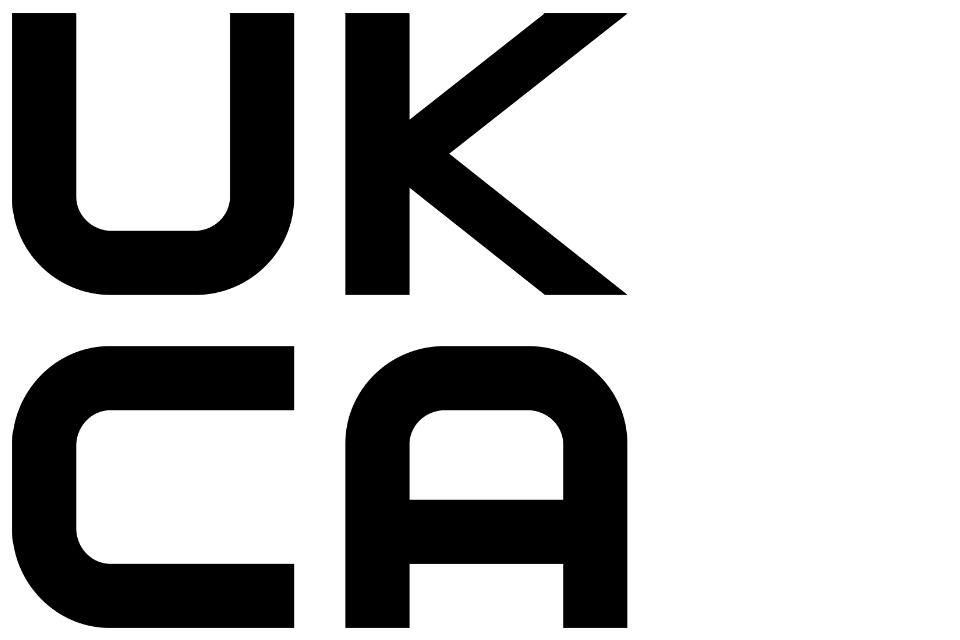
The UK's departure from the EU has led to significant changes in the regulatory landscape, particularly concerning CE marking. Now, disability aids in the UK require the UKCA marking (UK Conformity Assessed) to be sold legally. This shift necessitates that manufacturers and distributors of disability aids ensure their products comply with the new UK standards. Professionals need to verify that the aids they recommend or provide are properly certified.
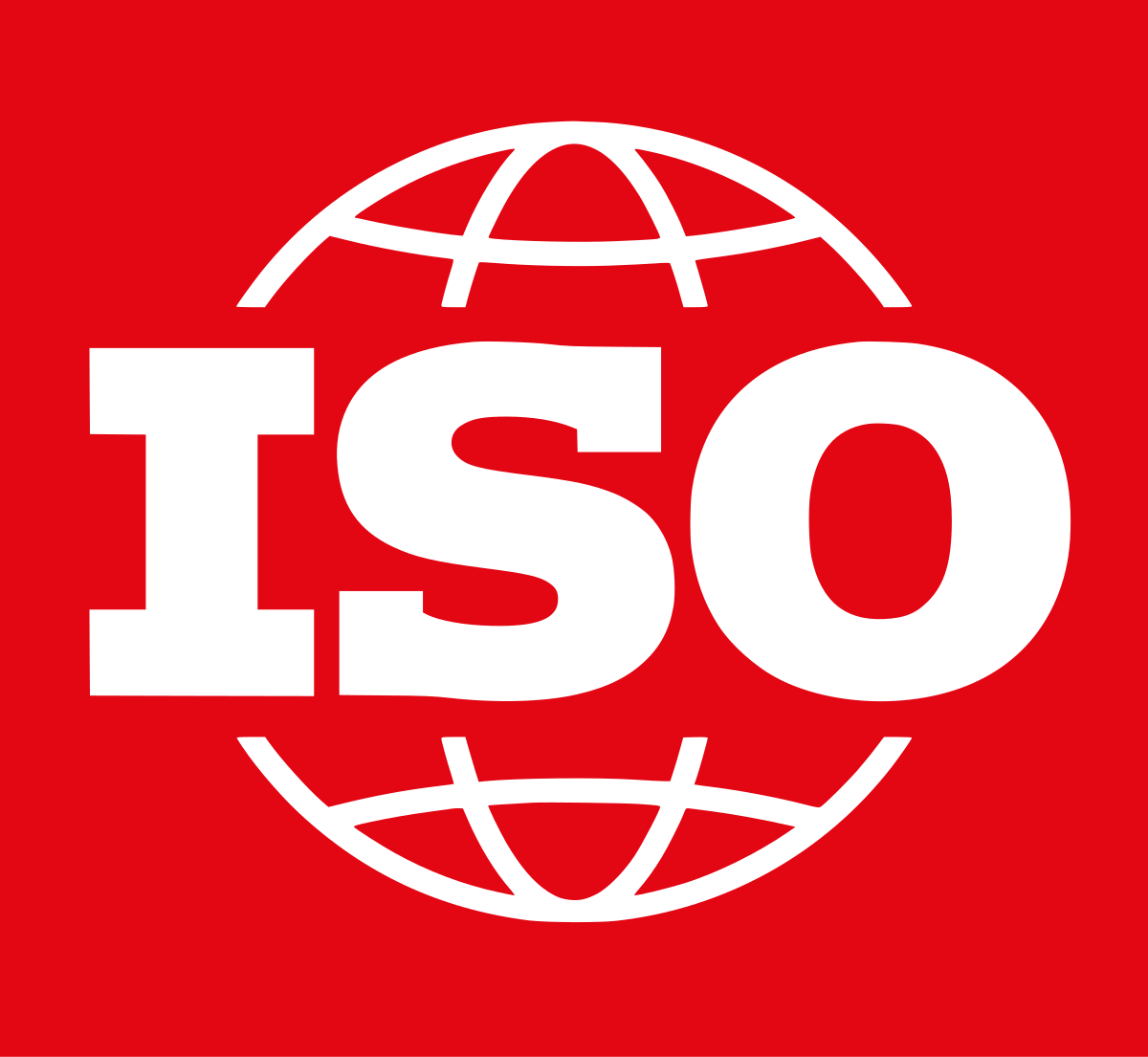 ISO Standards for Assistive Products
ISO Standards for Assistive Products
The International Organization for Standardization (ISO) periodically revises its standards for assistive products, ensuring they meet the latest technological advancements and safety requirements. The ISO 9999 classification, for example, is regularly updated to include new categories of assistive devices and refine existing classifications. Staying informed about these changes can help professionals recommend the most current and effective products to their clients.
Health and Care Professions Council (HCPC) Guidelines
The HCPC, which regulates health and care professionals in the UK, has updated its guidelines to emphasise the importance of continuous professional development in line with new standards and practices. For those specialising in occupational therapy, physiotherapy, or any field involving disability aids, adhering to these guidelines ensures that your practice remains aligned with the latest professional standards.
Emerging Best Practices in Disability Aids
Emphasising Individualised Care
The trend towards personalised medicine has reached the realm of disability aids, with a growing emphasis on tailoring products to individual needs. This approach improves patient outcomes and aligns with regulatory expectations for patient-centred care.
Sustainable and Ethical Practices
Sustainability is key in manufacturing and using disability aids. Professionals should be aware of products made from eco-friendly materials and companies that prioritise ethical manufacturing practices. Not only does this align with broader societal goals, but it also resonates with increasing clients who are conscious of their environmental footprint.
Integration of Smart Technology
Integrating intelligent technology into disability aids is an exciting development, offering enhanced functionality and greater user independence. Professionals should familiarise themselves with the latest intelligent aids, from sensors that monitor usage patterns to apps that allow for remote adjustments, ensuring they can have the familiar solutions for their clients.
Keeping up with regulatory updates and professional standards is essential for any health or therapy professional who works with disability aids. By staying informed, you not only ensure compliance but also enhance the quality of care you provide to your clients. The landscape is constantly changing, but with a commitment to learning and adaptation, you can remain at the forefront of your field, providing the best possible support to those who rely on your expertise.
Superhuman Day: Celebrating Resilience and Empowering Independence
September 7th is Superhuman Day, a special occasion dedicated to celebrating the incredible strength, determination, and resilience of those who overcome daily challenges with grace and grit. This day is all about recognising individuals who navigate life with disabilities, chronic illnesses, or any condition that requires them to push beyond the ordinary, achieving extraordinary feats in their daily lives.
What is Superhuman Day?
Superhuman Day was created to shine a spotlight on those who defy the odds every day. It’s a day to honour the people who live life to the fullest despite facing physical or mental challenges, inspiring those around them with their courage and perseverance. Whether through small victories or significant milestones, Superhuman Day is a reminder that every achievement is worth celebrating.
The Spirit of Superhuman Day
The essence of Superhuman Day lies in the belief that everyone has the potential to be a hero in their own right. It’s not just about grand gestures or monumental accomplishments; it’s about the everyday acts of bravery and determination that make a real difference in people’s lives. From adapting to new ways of living to find creative solutions to overcome obstacles, those we celebrate on Superhuman Day remind us of the incredible power of the human spirit.
How Tenura Can Support Your Superhuman Journey
At Tenura, we believe that everyone deserves the opportunity to live independently and confidently. Our range of daily living aids is designed to enhance independence by making everyday tasks more accessible and safer. Whether through our anti-slip mats that provide stability, jar openers that offer extra grip, or non-slip fabrics that keep items secure, Tenura products are here to support you in your journey toward greater independence.
Our mission is to help individuals by providing daily living aid solutions that improve their quality of life. On Superhuman Day, we’re proud to stand with those who demonstrate extraordinary resilience and offer tools that help them unlock their full potential.
Innovative Therapy with Tenura: Silicone Aids for Better Rehab
Innovative Therapy Techniques with Disability Aids
Innovation is key to enhancing patient outcomes and improving quality of life in therapy and rehabilitation. Silicone-based disability aids, such as those offered by Tenura, are making significant strides in this area. These aids are versatile and durable and play a crucial role in daily living and rehabilitation. This blog explores how Tenura’s silicone products can effectively integrate into therapy and rehabilitation, offering support during and after recovery.
The Benefits of Tenura Daily Living Aid Products
Tenura’s silicone aids are designed to assist individuals in various rehabilitation and daily living stages. Here’s how these products can benefit users:
1. Supporting Daily Activities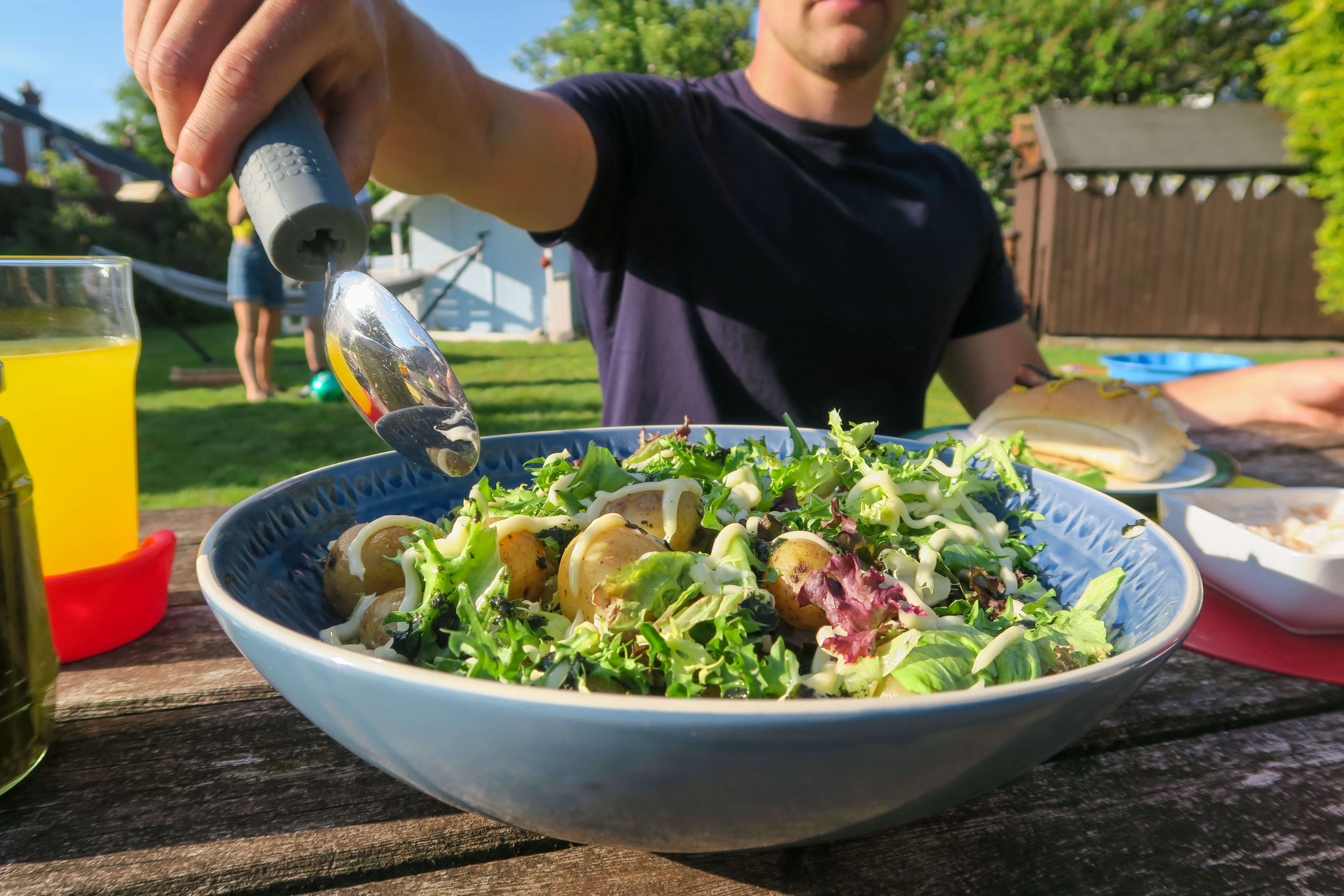
Tenura’s daily living aids, such as non-slip mats, jar openers, and ergonomic grips, offer practical support for everyday tasks. These aids help individuals with limited dexterity or strength perform activities like cooking, cleaning, and dressing more easily. By integrating these products into daily routines, users can maintain independence and improve their quality of life.
2. Enhancing Motor Skills Development
During rehabilitation, Tenura’s silicone aids provide valuable support for motor skills development. Products like cutlery grips are designed to strengthen muscles, improve coordination, and enhance fine motor skills. These aids can be used in various therapeutic exercises, helping individuals regain functionality and confidence in their abilities.
 3. Providing Comfort and Pain Relief
3. Providing Comfort and Pain Relief
Comfort is a crucial aspect of rehabilitation, and Tenura’s silicone aids offer solutions for pain management and comfort. Making everyday tasks more accessible with the jar openers can help reduce pain. Our daily living aid products help enhance overall comfort during the rehabilitation process.
4. Facilitating Assistive Technology Use
Tenura’s silicone aids are designed to complement assistive technology, making it more accessible and user-friendly. Silicone grip strips can improve the usability of adaptive devices, such as controllers and communication tools, ensuring that individuals with limited dexterity can use technology effectively.
Long-Term Benefits of Tenura Products
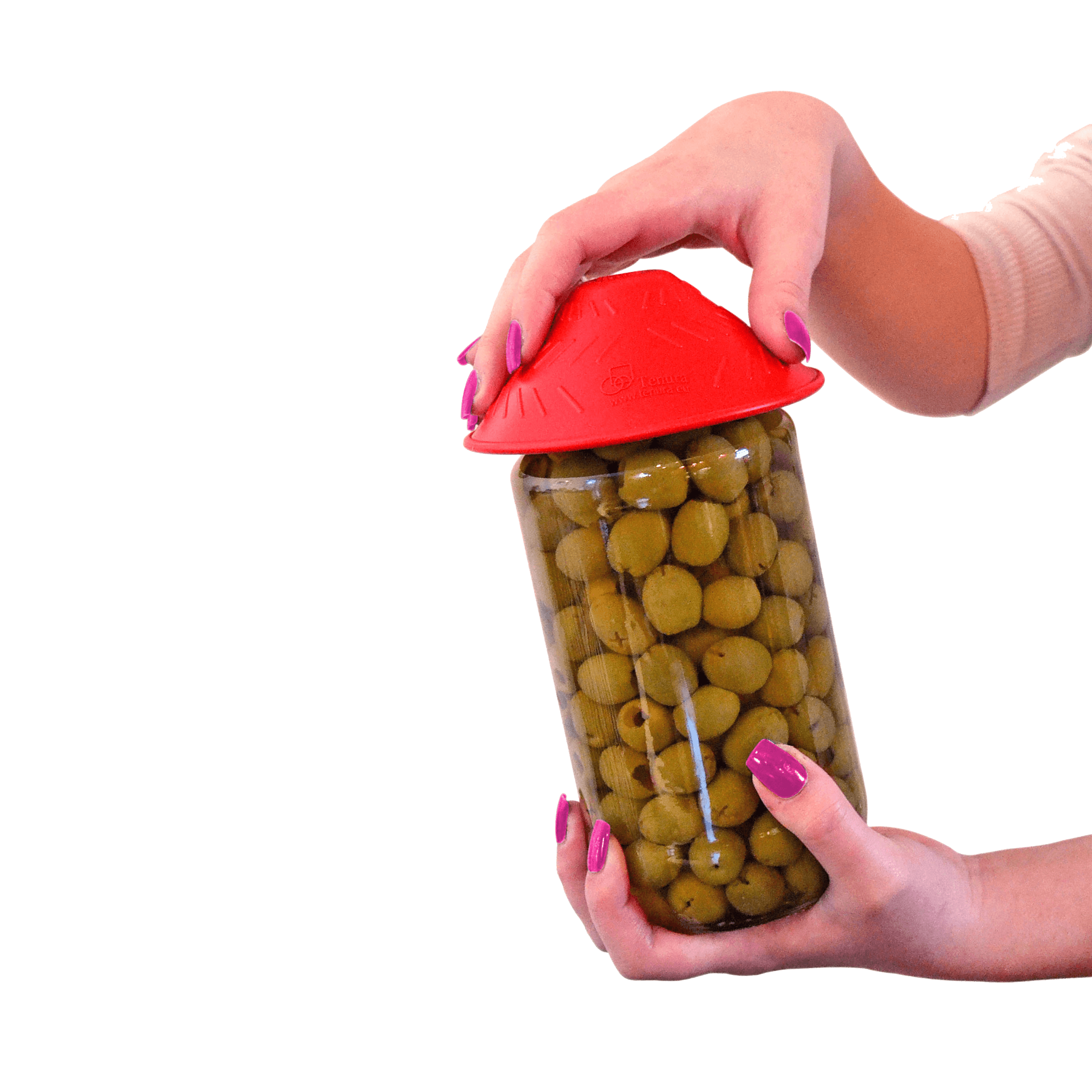 Sustained Independence
Sustained Independence
By integrating Tenura products into daily routines and therapy, individuals can enjoy long-term benefits such as sustained independence and improved self-care capabilities. These aids support users in performing everyday tasks with greater ease, promoting a sense of autonomy and confidence.
Enhanced Quality of Life
Tenura’s silicone aids contribute to an enhanced quality of life by addressing both practical and therapeutic needs. The combination of functional support and therapeutic benefits helps individuals maintain their lifestyle and well-being during and after rehabilitation.
Ongoing Support
Tenura products provide ongoing support beyond the rehabilitation phase, helping individuals adapt to changes in their abilities and maintain their independence. The durability and versatility of these aids ensure that they continue to be valuable tools throughout a user’s journey.
Tenura’s innovative silicone aids transform therapy and rehabilitation by offering practical support, enhancing motor skills and providing comfort. These products play a vital role in daily living and long-term well-being, helping individuals maintain independence and improve their quality of life. For more information on how Tenura’s daily living aids can support you or your patients, contact us today and discover the benefits of our versatile daily living aids.
The Transformative Power of Assisted Therapy Dogs & Helpful Dog Products | Tenura
Dogs have an extraordinary ability to enhance our lives in countless ways, serving as loyal companions, sources of comfort, and even as invaluable assistants in daily tasks. In particular, assisted therapy dogs play a vital role in providing support to individuals facing physical, emotional, or cognitive challenges. Through their unwavering loyalty and affection, these remarkable animals contribute to the well-being and quality of life of those they serve.
The Power of Assisted Therapy Dogs:
Assisted therapy dogs, trained to provide therapeutic support to individuals in need, offer a myriad of benefits that improves both physical and mental health. For individuals’ disabilities, therapy dogs can assist with mobility, rehabilitation, and sensory stimulation, thereby improving overall physical function and independence. Moreover, the presence of a therapy dog has proven to reduce stress levels, depression and anxiety while promoting relaxation and boosting mood, making them invaluable allies in the realm of mental health and emotional well-being.
One need only hear the heartwarming stories of individuals whose lives have been changed by the companionship and assistance of therapy dogs to understand the profound impact these animals can have. From helping a child with autism navigate social interactions to providing comfort and companionship to elderly individuals in nursing homes, the therapeutic benefits of assisted therapy dogs are truly remarkable.

Common Breeds of Assisted Therapy Dogs:
Golden Retriever: Renowned for their gentle temperament, intelligence, and innate desire to please, Golden Retrievers are frequently chosen as therapy dogs. Their friendly personality and ability to connect with people of all ages make them ideal companions for individuals in need of emotional support or assistance.
Labrador Retriever: Labrador Retrievers are another popular choice for therapy work due to their affable nature, trainability, and versatility. Their outgoing personalities and ability to engage with humans make them well-suited for tasks such as guiding individuals with visual impairments or providing comfort in therapeutic settings.
German Shepherd: Known for their loyalty, intelligence, and protective instincts, German Shepherds are often employed as service dogs in various capacities, including assisting individuals with physical disabilities or providing emotional support in therapy settings. Their natural aptitude for obedience training and strong bond with their handlers make them valuable assets in the field of assisted therapy.
Poodle: Poodles are highly regarded for their intelligence, hypoallergenic coat, and gentle demeanour, making them excellent candidates for therapy work. Standard, Miniature, and Toy Poodles are all utilised in therapy programs, where their calm and patient demeanour can provide comfort and companionship to individuals in need.
Cavalier King Charles Spaniel: Based on their affectionate nature, friendly disposition, and small size, Cavalier King Charles Spaniels are well-suited for providing emotional support and companionship to individuals in various therapeutic settings. Their gentle demeanour and adaptable nature make them cherished therapy companions.
Acquiring an Assisted Therapy Dog:
Individuals interested in acquiring a therapy dog have several avenues to explore. One option is to contact certified therapy dog organisations that specialise in training and certifying therapy dogs. These organisations often have specific requirements for both dogs and handlers and can provide guidance on the process of obtaining and training a therapy dog. Alternatively, individuals can investigate local therapy dog programs or facilities in their area that utilise therapy dogs in therapeutic settings. These programs may offer opportunities for volunteer work or provide information on how to become involved with therapy dog teams. For those who already have a dog with the appropriate temperament and disposition, training them for therapy work is another possibility. Enrolling in obedience classes, pursuing specialised training for therapy work, and seeking guidance from experienced trainers or organisations can help prepare a dog for its role as an assisted therapy dog. Additionally, some organisations may have trained therapy dogs available for adoption or placement with individuals in need, offering a rewarding option for those seeking a companion with prior training and experience in therapy work.
Helpful Dog Products for Daily Living:
In addition to the invaluable support provided by therapy dogs themselves, a range of helpful dog products further enhances the daily lives of individuals with diverse needs. At Tenura Daily Living Aids, our products are designed to promote safety, accessibility, and independence, not only for humans but for their canine companions as well. For example, our Extreme Grip Mats and Non-Slip Table Mats are not only perfect for securing household items, but they also keep dog bowls firmly in place, preventing spills and messes during meal times.
From mobility assistance products such as harnesses and lifting aids to emotional support tools like calming vests and interactive toys, there are countless innovations aimed at improving the lives of both dogs and their human counterparts. Training aids, communication tools, and safety products further contribute to the well-being and safety of individuals living with assistance dogs.
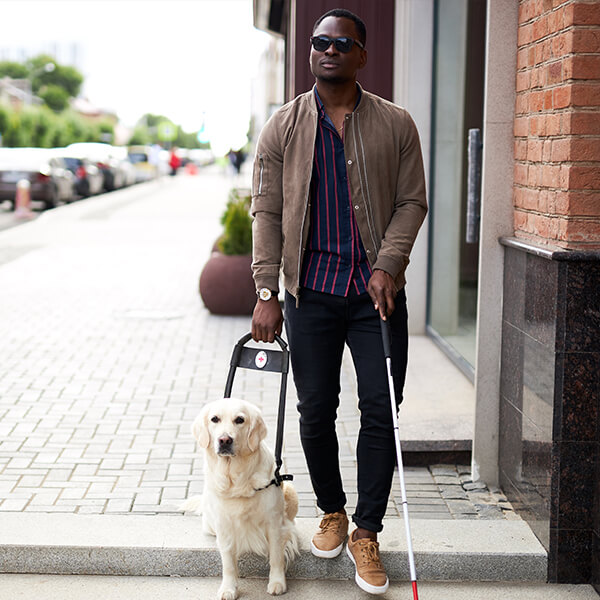 What is the Difference Between a Support Dog and an Assistance Dog?
What is the Difference Between a Support Dog and an Assistance Dog?
In essence, the difference between a support dog and an assistance dog lies in their roles and training. A support dog, also known as an emotional support animal (ESA), offers comfort and companionship to individuals with mental health conditions without requiring specialised training. Conversely, an assistance dog, commonly referred to as a service dog, undergoes rigorous training to perform specific tasks or assist individuals with disabilities in their daily activities. While support dogs focus on providing emotional support, assistance dogs are trained to perform tasks such as guiding individuals with visual impairments, alerting those with hearing impairments, or providing physical assistance for mobility, thereby enabling greater independence for their handlers.
The bond between humans and dogs is one of profound mutual benefit, characterised by companionship, support, and unwavering loyalty. Assisted therapy dogs, alongside helpful dog products, play a pivotal role in enhancing daily living for individuals facing a range of challenges. Through their presence, companionship, and specialised training, these remarkable animals bring comfort, joy, and independence to those they serve, enriching lives in ways that are truly immeasurable.
We invite you to share your own experiences with therapy dogs or to explore the possibilities of integrating these remarkable animals into your life. For more information about Tenura Daily Living Aids and our range of helpful products for pets and humans alike, visit our website or connect with us on social media. Together, let's celebrate the transformative power of assisted therapy dogs and the invaluable contributions they make to our lives every day.
Improve grip for homeware handles to maintain an independent lifestyle.
In the realm of daily living aids, small enhancements can have a profound impact on comfort and usability. Tenura, a leading provider of Daily Living Aid products, introduces anti-slip strips in both strips and rolls, available in two versatile colours: blue and red. These strips not only transform the grip on homeware handles but also offer easy cleaning and maintenance, ensuring a seamless and effective solution.
Handling homeware items like kettles, mugs, and vacuum cleaners becomes an easy experience with Tenura's anti-slip strips. The strips, offered in vibrant blue and red, go beyond traditional solutions by adding a touch of personalisation to improve independent daily activities.
 What Are The Best Strips for Tool Handles?
What Are The Best Strips for Tool Handles?
When it comes to enhancing the grip on tool handles, Tenura's anti-slip strips stand out as the top choice. Their durable composition, easy application, and consistent non-slip properties make them the ideal solution for various tools. From garden tools to hand tools, the versatility of these strips ensures a secure and comfortable grip in every application.
Tenura's commitment to user-friendly solutions is evident in the easy application of anti-slip strips. Simply adhere them securely to handles and experience an enhanced grip that remains effective even after cleaning. The strips maintain their non-slip properties, ensuring a consistent and reliable performance.
How Do I Use Grip Strips?
Using Tenura's grip strips is a straightforward process that yields significant results. Start by cleaning the handle thoroughly to ensure proper adhesion. Then, apply pressure and wrap it securely around the handle. Press down to ensure a firm grip. The versatility of these strips allows users to adapt them to various handle shapes and sizes, making them a practical and customisable solution.
The unique composition of Tenura's anti-slip strips provides a non-intrusive yet durable solution. With increased friction and a secure hold, the strips showcase their effectiveness in daily activities. The easy-to-clean nature of these strips adds to their appeal, making them a practical and hygienic choice for homeware applications.
Imagine enjoying a hot cup of tea with unwavering confidence, knowing that your mug is secure in your hands. The application of anti-slip strips elevates these seemingly mundane activities, highlighting their effectiveness in enhancing comfort and usability, all while offering the convenience of easy cleaning.
The versatility of anti-slip strips extends across a spectrum of homeware items. From kitchen utensils to garden tools, the strips contribute to a safer and more enjoyable experience with everyday items. Tenura's range of anti-slip strips, available in two colours, empowers users to tailor their approach, adding a personal touch to their homeware.
In conclusion, the effectiveness of anti-slip strips in homeware applications is not only about transforming grip but also about personalisation and practicality. Tenura's commitment to offering these strips in vibrant colours, coupled with their easy cleaning and maintenance properties, ensures that users can enjoy the full potential of their homeware without compromise. Elevate your daily living experience with the assurance of improved grip, personalisation, and enhanced usability through Tenura's anti-slip solutions.
The Role of Technology in Maintaining Social Connections for People with Disabilities in a Post-Lockdown World
As heavily as COVID impacted the entire world, people with disabilities faced specific challenges during and beyond lockdown owing to three overriding factors: the increased risk of poor outcomes from this disease, reduced access to routine health care and rehabilitation, and the negative social impact caused by efforts to reduce contagion. Although lockdown is a thing of the past, the social effects of the pandemic are far from over. As reported by the BBC, COVID has resulted in the rise of remote work, with many companies resorting to a “hybrid” work model that has actually proven to be a great leveller in terms of equality, diversity, and inclusion. However, telecommuting also has its downside—greater isolation ad fewer opportunities for in-person interaction. How is technology working to bridge the divide and unite disabled people with their colleagues, friends, and family in the age of the “new normal?”

Entering Virtual and Real Worlds
Mixed reality headsets are one of the buzzwords in the tech sector. Anyone who enjoys gaming, working on a large “monitor” or interacting with others via video conference call is keen to get their hands on Apple’s new Vision Pro mixed reality headset. You simply put this headset on and start “working” on an enormous virtual screen whose size you can manipulate (imagine enjoying an online game with others on a virtual screen that is as large as your wall). You don’t need a mouse; you simply swipe and click items on the screen with your fingers. You can use all your usual apps, look at photos and video recordings, or work as you would on a typical monitor. You can also use the headset to make spatial FaceTime calls with scanned avatars that use AI to mimic the appearance and body language of the person wearing the headset. You can see all your contacts in “larger-than-life” size as they talk, and share documents and information as you normally would when working with a normal computer. It’s easy to see how this technology can help disabled people feel much more connected to their colleagues and friends, until they can see them in person, of course!
 Reinventing the Wheelchair
Reinventing the Wheelchair
A person’s ability to move from one area to another play a crucial role in encouraging social interaction. Innovative wheelchair technology is improving mobility, safety, and accessibility, making it easier for wheelchair users to attend social events. Accessibility legislation has done plenty to boost accessible housing and rental policies. For instance, the law in most countries deems it necessary for landlords to accommodate disabled tenants via wheelchair access ramps, the installation of railings, adapted shouting and bathing facilities, and similar. However, it also helps for wheelchairs themselves to contain cutting-edge technologies that make movement easier. Currently, a few innovations that are making it easier to get around include self-driving, smart wheelchairs with sensors that use ultrasonics, radars, and cameras to perform tasks like slowing chairs down to prevent accidents.
Glasses That Speak
XRAI Glass is an innovative pair of glasses that allows deaf people to read real-time captions when talking to others. Instead of relying on lip-reading, deaf people can see that the other person is saying through the lenses. The glasses go a step further—they can even translate languages, vocal tones, accents, and pitches. They make an ideal tool for social interaction, work, education, and events. They come with a Bluetooth mic, which means that they can “see” conversations from a distance. Jodie Ounsley, a professional rugby player, has tried the glasses and stated that although she embraces her deafness with positivity, her disability “is a really isolating place at times. You miss out on a lot, and it’s a mental journey trying to lip-read.” She has stated that the glasses makes social interaction considerably easier. The smart glasses work with the XRAI app, which turns speech into subtitles in real time.
Although lockdown has long been over, the effects of COVID have continued into current times. Many disabled people are pleased to be working from home owing to the ease of this new arrangement, but remote work can be isolating. Technological innovations are constantly bridging the divide between remote and in-person work modes. Apple’s Vision Pro, smart wheelchairs, and XRAI Glass are just three of many technologies that are uniting disabled people with other people with and without disabilities.